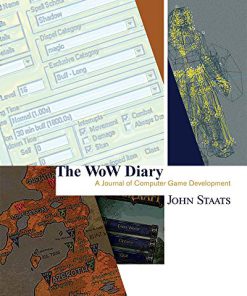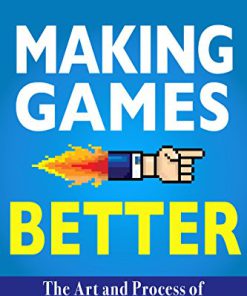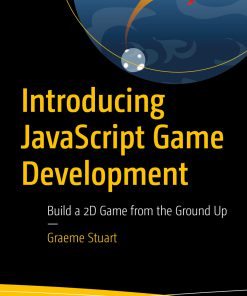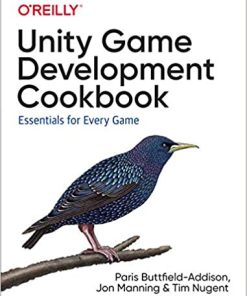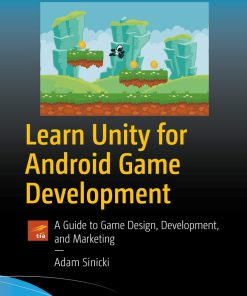Lean Game Development : Apply Lean Frameworks to the Process of Game Development 1st Edition by Julia 148423216X 9781484232163
$50.00 Original price was: $50.00.$25.00Current price is: $25.00.
Lean Game Development : Apply Lean Frameworks to the Process of Game Development 1st Edition by Julia – Ebook Instant Download/Delivery ISBN(s): 148423216X, 9781484232163
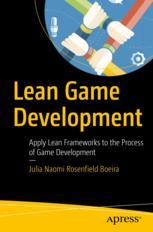
Product details:
- ISBN 10: 148423216X
- ISBN 13: 9781484232163
- Author: Julia
Apply lean frameworks and other concepts of software development to the process of your game development. Resistance to Agile methodologies in the gaming industry is most often due to frustrated attempts to use lean tools and frameworks. Lean Game Development teaches you how to apply frameworks and concepts successfully to benefit you and your team. You will see how to manage, develop and coexist in a lean game development environment. You’ll understand what lean is and how it helps the gaming industry. You’ll see how to apply MVP concepts and why you should.
Table of contents:
Chapter 1: Introduction
Why Lean Game Development, Not Agile Game Development?
How Do Lean and Agile Relate to the Game World?
Games and Software Relate Much More Deeply
What Kind of Game Is Software Development?
Where Did We Go Wrong?
Summary
Chapter 2: First Steps with Lean
Seven Key Principles of Lean
Lean Inception
How Does This Apply to Games?
Lean PMO
How Does a Lean PMO Apply to Games?
Lean DevOps
How Does It Apply to Games?
Kanban
How Can You Take Advantage of Scrum?
Continuous Integration
Going from Build Measure to Lean Game
Looking Deeper at the Inception
How Does It Apply to Games?
Test-Driven Development
Lean and Games
Summary
Chapter 3: An Inception in Practice
Inception Defined
Anatomy of an Inception
Defining Goals
Researching
Generating Insights
The Game’s Narrative
The Game’s Main Characteristics
The Game’s Intended Outcome
The Game’s Intended Audience
How Are Users Able to Play?
Prioritizing Ideas
Developing Personas
Journeys of Personas
Stories
Brainstorming
Creating Hypotheses
Summary
Chapter 4: MVPs: Do We Really Need Them?
MVP and MVG Defined
Building Prototypes
The PO Role in MVPs/Prototypes
Getting More from Less
Recognizing When a Game Is Not Viable
Thinking Simpler First
From the MVP Canvas to Lean Game Development
MVGs and Prototypes of Super Jujuba Sisters
Dividing Your MVGs
Splitting the MVGs or Increments
Summary
Chapter 5: Generating Hypotheses
When Hypotheses Are Not Created from the Inception
Summary
Chapter 6: Test-Driven Development
TDD Defined
Tests Are Good, But Why Is There So Much Poorly Tested Code?
Applying TDD to Games
Overcoming the Hurdles
Making TDD Better
Refactoring
Pair Programming
Summary
Chapter 7: Continuous Integration
Why Continuous Integration?
Using Continuous Integration
A Team’s Responsibilities Regarding CI
Code Versioning
Automated Build
Summary
Chapter 8: The World Between Design and Build
A Little Bit of Design
A Little Bit of Build
Pretty Beautiful, But How Is It Done?
Summary
Chapter 9: Test, Code, Test
Testing Types
Test Cases
Coding Game Artwork
Coding the Game Software
Test Automation
Summary
Chapter 10: Measuring and Analyzing
Feedback
More on Feedback
What’s Feedback?
How to Give Feedback
Other Ways of Measuring
Measuring Through Hypotheses
Analyzing
Measuring Your Hypotheses of the Female Audience Reach
Measuring Your Hypotheses on Basic Features
Summary
Chapter 11: Creating Ideas for Iterating
People also search:
lean learning games
beginner game development
balance game design
blender game development
beginner game development projects
You may also like…
Business & Economics - Management & Leadership
Lean Engineering for Global Development Anabela Carvalho Alves
Business & Economics - Management & Leadership
Computers - Programming
Computers - PC & Video Games
Uncategorized
Computers - Web Development
Computers - Programming
Computers - Programming
Computers - Web Development







